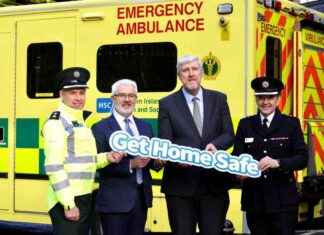After weeks of preparation, it all starts this Wednesday: For the first time, consumers can use their 9-euro tickets, some of which they bought days ago, for journeys in local public transport. In June, July and August you can drive it all over Germany. But there are still a few things to consider before you start.
Where can I buy the ticket in time?
The tickets are and will remain available via the apps, ticket offices, customer centers and other points of sale of the respective transport companies and associations. Since this Monday, the Association of German Transport Companies (VDV) has also had its own “9-Euro-Ticket” app, which can be downloaded from the usual platforms and via which the monthly tickets can also be purchased. “This means that new customers in particular now have the opportunity to purchase the 9-euro ticket via app in whose home region the ticket has not yet been offered via app or other digital means,” the association announced.
For what period is the ticket valid?
The tickets are valid for June, July and August – for the calendar month. Tickets for flexible 4-week periods are not possible, for example from mid-July to mid-August.
Which means of transport can I use with the ticket?
In principle, the 9-euro ticket is valid nationwide on all buses, trams, subways, S-Bahn and local and regional trains – regardless of whether they are from Deutsche Bahn or other providers. The long-distance traffic of Deutsche Bahn with ICE, Intercity and Eurocity cannot be used. The ticket is also not valid on some intercity sections on which passengers with other local transport tickets are otherwise allowed to board, as Deutsche Bahn made clear last week. These long-distance trains are shown in the travel information in addition to the IC with a regional train designation. The note “9-EUR-Ticket is not valid”, said a spokesman. This recently caused confusion for some customers. According to the railways, talks are still going on regionally on the subject.
Can the 9-euro ticket be combined with ICE tickets?
Yes. As reported by Deutsche Bahn, you can use it to travel to the station in regional transport where you change to a long-distance train. However, a separate ticket is always required for long-distance travel.
Will checks continue despite the cheap tickets?
Yes, according to the transport companies, they will continue to check as usual. If you are found without a ticket, you still pay a so-called increased transport fee of usually 60 euros.
Why isn’t the ticket free right away?
This proposal actually came from the federal states. Simply doing without tickets (and the control) would have significantly reduced the effort, so the argument goes. One reason why some money is being asked for is that usage can be better analyzed in this way. Who uses buses and trains on which routes when it is significantly cheaper – that is an exciting question for the transport companies.
How crowded does the train get?
“We don’t have the foggiest idea,” said Jörg Sandvoss, head of the regional subsidiary DB Regio, on this question. According to the VDV, 30 million ticket users per month can be expected. But that is only an estimate. The high demand for the tickets is an indicator: almost three million tickets have already been sold through the digital channels of Deutsche Bahn alone up to and including Monday. Many experts are already expecting a first stress test for public transport for the coming long Pentecost weekend.
Are additional trains used?
Many transport companies have announced booster trains for the three months. Deutsche Bahn, for example, wants to use 50 additional trains and increase staff. The vehicles could be offered 250 additional trips, it said. They are to be used primarily along the tourist routes towards the North and Baltic Seas and in the south. But given the average of around 22,000 regional train journeys every day, experts are skeptical as to whether that will be enough.






